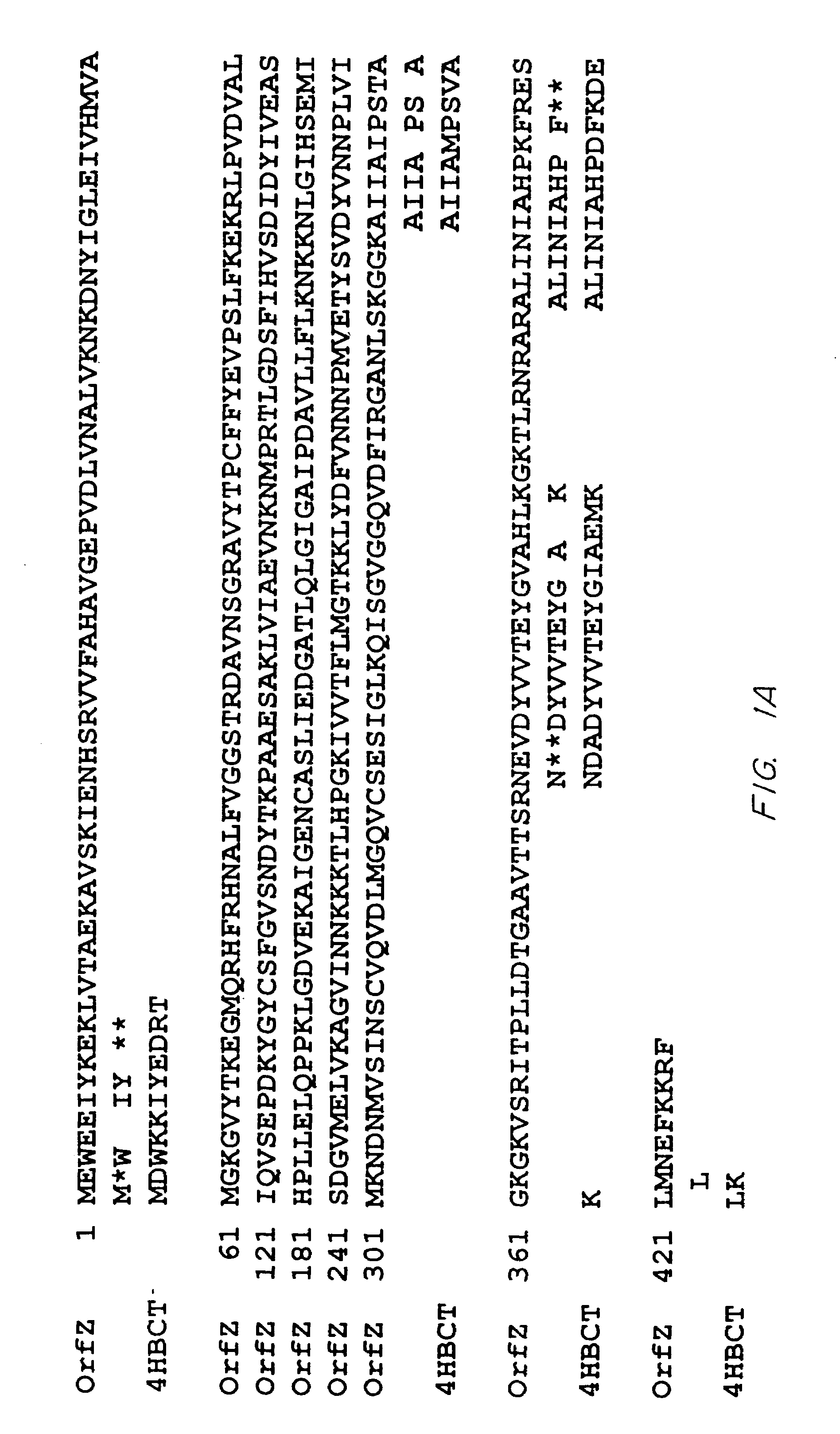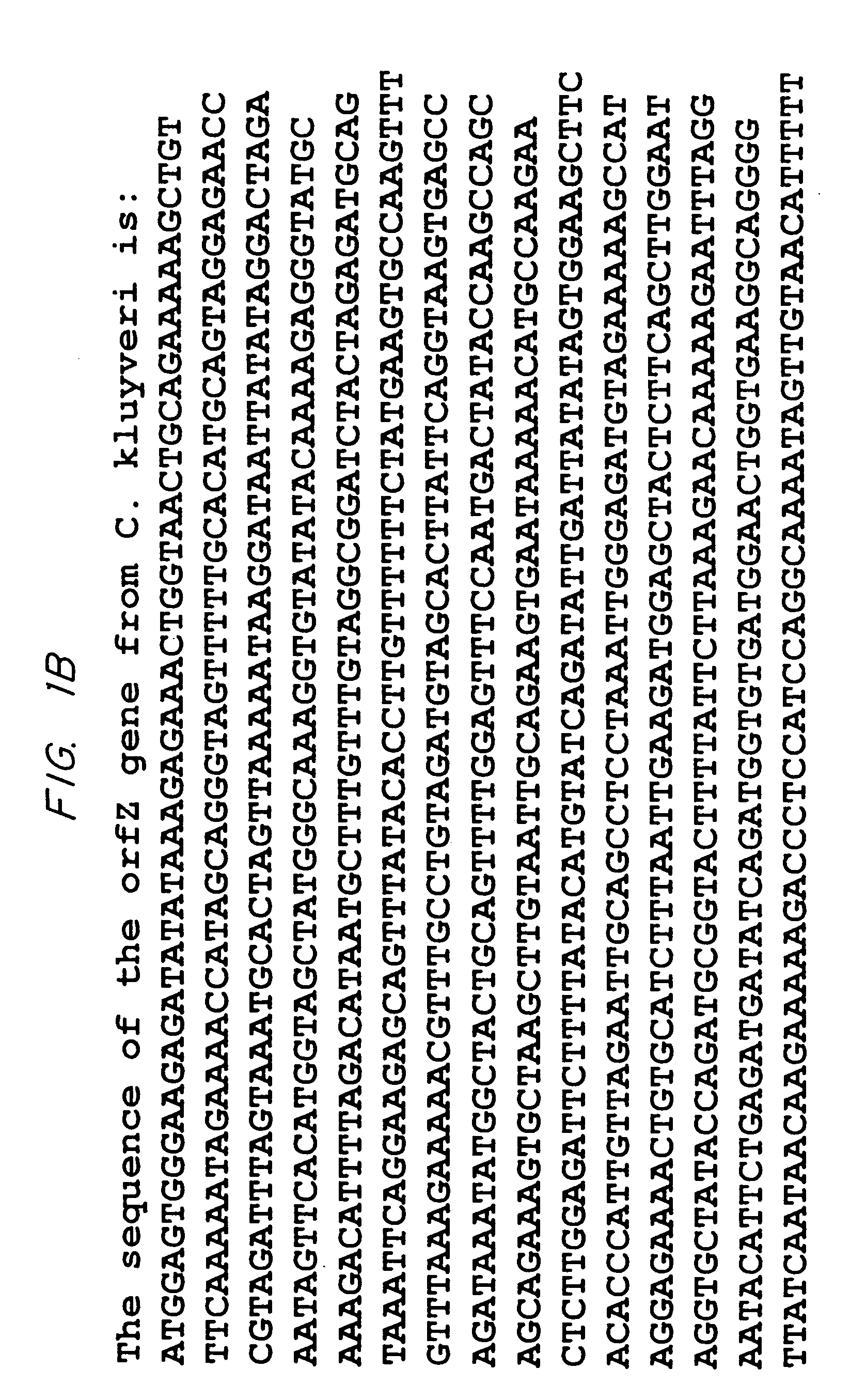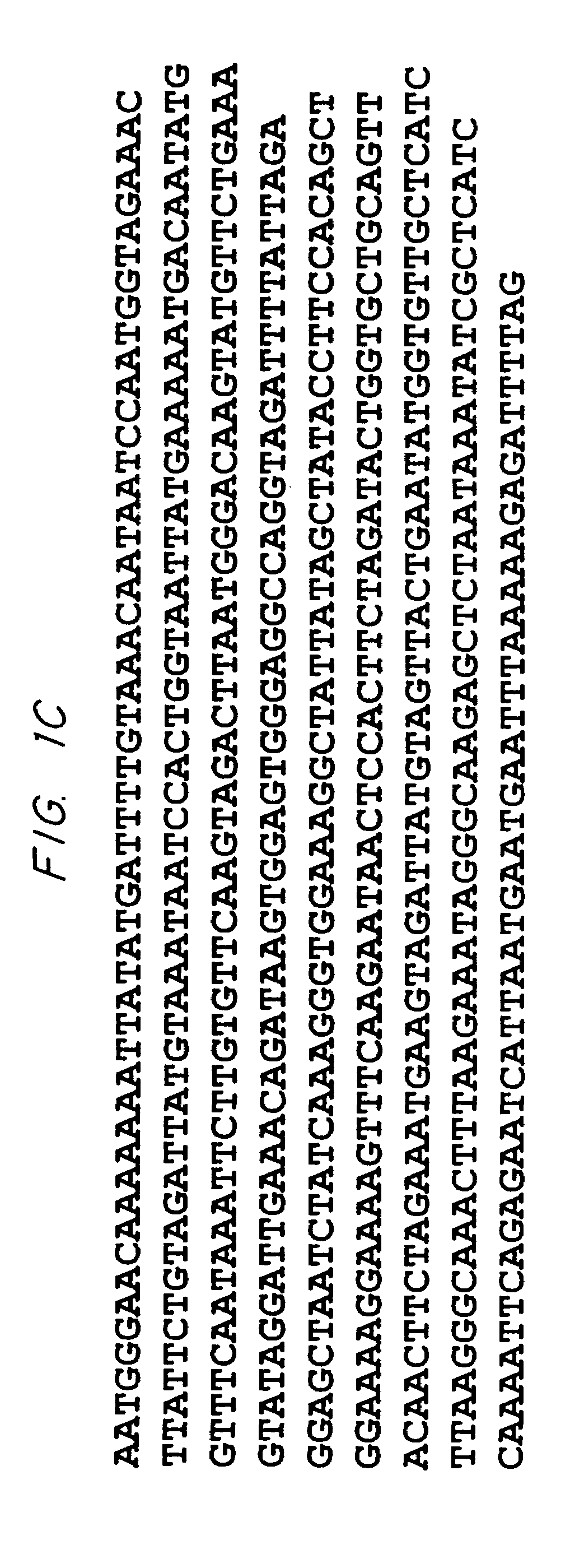Biological systems for manufacture of polyhydroxyalkanoate polymers containing 4-hydroxyacids
a technology of polyhydroxyalkanoate and biological systems, which is applied in the direction of enzymology, organic chemistry, transferases, etc., can solve the problems of limited commercial availability of phas, low growth rate, and difficult to break open, so as to improve production processes
- Summary
- Abstract
- Description
- Claims
- Application Information
AI Technical Summary
Benefits of technology
Problems solved by technology
Method used
Image
Examples
example 1
Minimal Requirements for PHB-4HB Synthesis
[0072]It has been previously shown that the minimum requirements for the synthesis of poly-(R-3-hydroxybutyrate) (PHB) are the purified PHA synthase from A. eutrophus and the substrate (R)-3-hydroxybutyryl-CoA. 4-Hydroxybutyryl-CoA can be prepared in situ from acetyl-CoA and 4-hydroxybutyrate via a transthioesterification reaction catalyzed by the enzyme 4-hydroxybutyryl-CoA transferase, isolated from Clostridium aminobutyricum. This enzyme will also catalyze the formation of (R)-3-hydroxybutyryl-CoA from the free acid and acetyl-CoA. Thus the minimum requirements for the in situ synthesis of 4-hydroxybutyryl-CoA and its co-polymerization with (R)-3-hydroxybutyryl-CoA to form P(3HB-co-4HB) would include PHA synthase, (R)-3-hydroxybutyric acid, 4-hydroxybutyric acid, acetyl-CoA and 4-hydroxybutyryl-CoA transferase in a buffered aqueous solution. This was demonstrated as follows:
[0073]To potassium phosphate buffer (1 ml, 100 mM, pH 7.5) the fo...
example 2
Poly(4-hydroxybutyrate) (P4HB) Synthesis in E. coli Using a Plasmid Encoded Pathway
[0079]The hbcT gene from C. kluyveri was expressed in E. coli using standard molecular biological techniques. The gene is placed in an appropriate vector behind a strong promoter and under conditions that drive expression from this promoter. 4HBCT is produced.
[0080]Strains of E. coli were equipped with plasmid pFS30 which contains the genes encoding 4-hydroxybutyryl-CoA transferase from C. kluyveri and PHB synthase from R. eutropha. Theses genes are expected to convert 4-hydroxybutyric acid into 4-hydroxybutyryl-CoA which is subsequently polymerized to poly(4-hydroxybutyrate). Strains were grown in 250 ml Erlenmeyer flasks containing 50 to 100 ml 10% LB liquid medium with 4-hydroxybutyrate, alone or in combination with glucose, as carbon source. Cultures were incubated at 30 to 33° C. with shaking at 150 or 200 rpm. Cultures were harvested after 24 hours of incubation and analyzed for PHA. E. coli MBX...
example 3
Poly(4-hydroxybutyrate) (P4HB) Synthesis in E. coli Using a Plasmid Encoded PHA Synthase
[0082]Strains of E. coli were equipped with plasmid pFS16, which contains the gene encoding 4-hydroxybutyryl-CoA transferase from C. kluyveri. This gene is expected to convert 4-hydroxybutyric acid into 4-hydroxybutyryl-CoA which is subsequently polymerized by a chromosomally encoded PHB synthase into P4HB. Strains were grown in 250 ml Erlenmeyer flasks containing 50 to 100 ml 10% LB or 100% LB liquid medium with 4-hydroxybutyrate, alone or in combination with glucose, as carbon source. Cultures were incubated at 32 to 37° C. with shaking at 0 to 250 rpm. Cultures were harvested after 24 hours of incubation and analyzed for PHA. E. coli MBX769 with pFS16 accumulates 67% of its cell dry weight as a P4HB homopolymer. Formation of 4HB containing PHAs is consequently not dependent on a plasmid encoded PHB synthase.
[0083]
hostvolumerpm4HBglcT% LB% PHAF(4HB)777 50 ml25050371007.60.36769 50 ml25050371000...
PUM
| Property | Measurement | Unit |
|---|---|---|
| elongation to break | aaaaa | aaaaa |
| elongation to break | aaaaa | aaaaa |
| glass transition temperatures | aaaaa | aaaaa |
Abstract
Description
Claims
Application Information
 Login to View More
Login to View More - R&D
- Intellectual Property
- Life Sciences
- Materials
- Tech Scout
- Unparalleled Data Quality
- Higher Quality Content
- 60% Fewer Hallucinations
Browse by: Latest US Patents, China's latest patents, Technical Efficacy Thesaurus, Application Domain, Technology Topic, Popular Technical Reports.
© 2025 PatSnap. All rights reserved.Legal|Privacy policy|Modern Slavery Act Transparency Statement|Sitemap|About US| Contact US: help@patsnap.com



